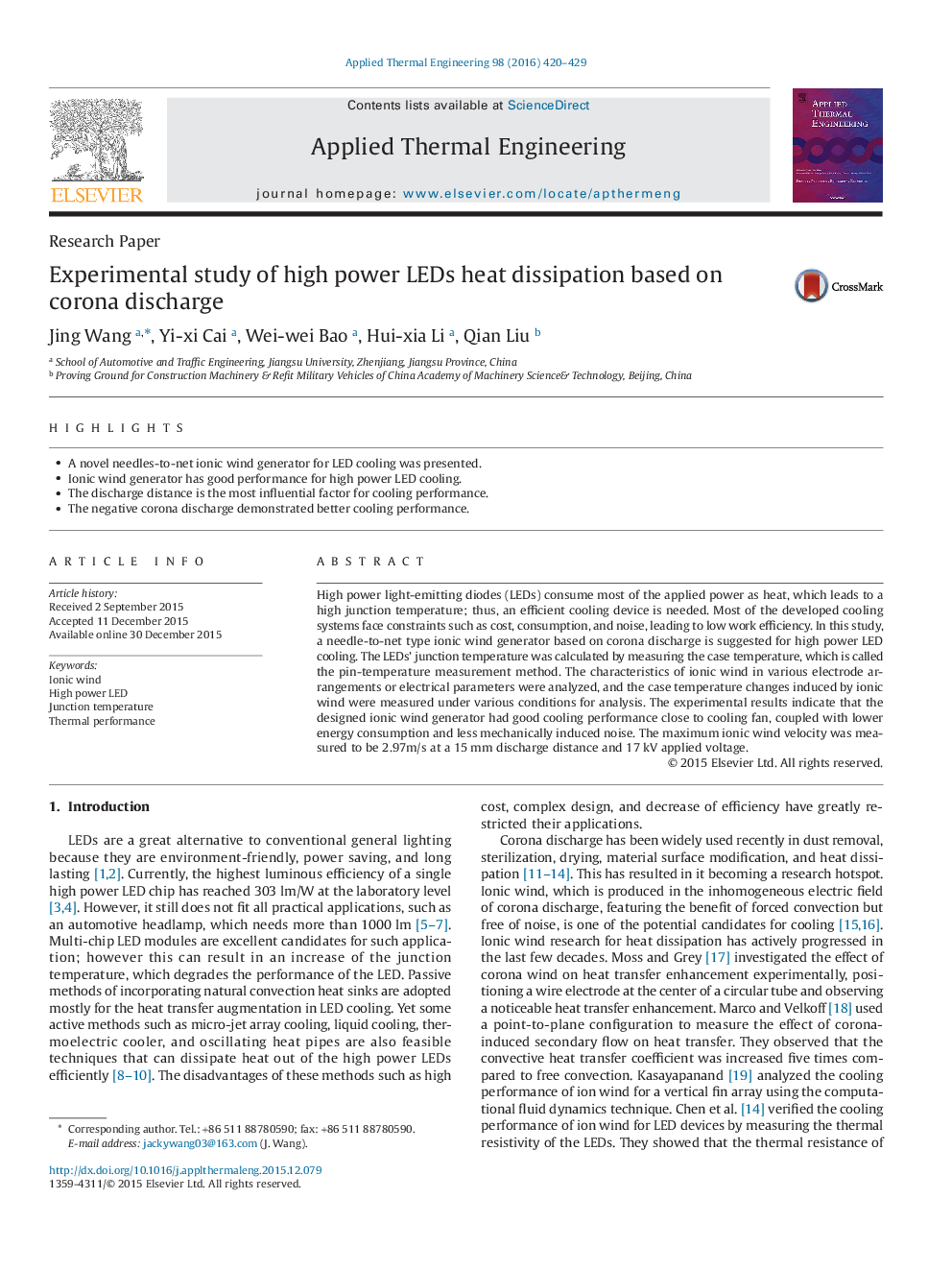| Article ID | Journal | Published Year | Pages | File Type |
|---|---|---|---|---|
| 7048512 | Applied Thermal Engineering | 2016 | 10 Pages |
Abstract
High power light-emitting diodes (LEDs) consume most of the applied power as heat, which leads to a high junction temperature; thus, an efficient cooling device is needed. Most of the developed cooling systems face constraints such as cost, consumption, and noise, leading to low work efficiency. In this study, a needle-to-net type ionic wind generator based on corona discharge is suggested for high power LED cooling. The LEDs' junction temperature was calculated by measuring the case temperature, which is called the pin-temperature measurement method. The characteristics of ionic wind in various electrode arrangements or electrical parameters were analyzed, and the case temperature changes induced by ionic wind were measured under various conditions for analysis. The experimental results indicate that the designed ionic wind generator had good cooling performance close to cooling fan, coupled with lower energy consumption and less mechanically induced noise. The maximum ionic wind velocity was measured to be 2.97m/s at a 15âmm discharge distance and 17âkV applied voltage.
Related Topics
Physical Sciences and Engineering
Chemical Engineering
Fluid Flow and Transfer Processes
Authors
Jing Wang, Yi-xi Cai, Wei-wei Bao, Hui-xia Li, Qian Liu,
